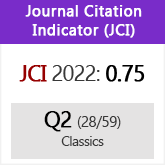Writing and self-exemplarity in Seneca’s Epistula 30
DOI:
https://doi.org/10.3989/emerita.2017.05.1611Keywords:
Seneca, Epistulae, self-exemplarityAbstract
Seneca’s self-exemplarity in the Epistulae deserves further attention. This article assumes that in this text Seneca actively appropriates one Roman cultural device which plays a central role in memory building, the discourse of exemplarity. Taking into account that the topic of dying well is one of the backbones of the collection as a whole, we will examine Ep. 30, where the epistolary ego describes how an old friend faces death in an exemplary way. Considering that a deed proposed as exemplar requires not only a record, but also an agent that makes it visible (Roller 2004), we will try to show that in this letter the epistolary ego, aided by the written word, directs the reader’s attention to his own exemplarity, in order to build a positive and memorable portrait of himself.
Downloads
References
Armisen-Marchetti, M. 1989: Sapientiae facies. Étude sur les images de Sénèque, París.
Barton, C. A. 1993: The Sorrows of the Ancient Romans: The Gladiator and the Monster, Princeton.
Bartsch, S. 2006: The Mirror of the Self. Sexuality, Self-Knowledge and the Gaze in the Early Roman Empire, Chicago.
Brown, R. D. 1992: «Senecan Drama and Stoic Cosmology», Ancient Philosophy 12 (2), pp. 479-483. https://doi.org/10.5840/ancientphil199212229
Cancik, H. 1967: Untersuchungen zu Senecas Epistulae morales, Hildesheim.
Chaplin, J. 2000: Livy's Exemplary History, Oxford.
Coffta, D. J. 2002: The influence of Callimachean aesthetics on the Satires and Odes of Horace. Studies in Classics 19, Lewiston-Queenston-Lampeter.
Cugusi, P. 1983: Evoluzione e forme dell'epistolografia latina nella tarda reppublica e nei primi due secoli dell'impero, con cenni sull'epistolografia preciceroniana, Roma.
Dupont, F. 1992: «Des images qui font parler», Résistances de l'image, T.I.G.R.E. (Texte et image, Groupe de Recherche à l'École Normale Supérieure), París, pp. 23-31.
Edwards, C. 1997: «Self-Scrutiny and Self- Transformation in Seneca's Letters», G&R 44, pp. 23-38.
Edwards, C. 1999: «The suffering body: Philosophy and Pain in Seneca's Letters», en Porter, J. I. (ed.), Constructions of the Classical Body, Ann Arbor, pp. 252-268.
Edwards, C. 2007: Death in Ancient Rome, New Haven-Londres.
Gill, C. 1973: «The Death of Socrates», CQ 23, pp. 224-228. https://doi.org/10.1017/S0009838800036454
Graver, M. R. 1996: Therapeutic Reading and Seneca's Moral Epistles, PhD Dissertation, Brown University.
Graver, M. R. 2016: «The Emotional Intelligence of Epicureans. Doctrinalism and Adaptation in Seneca's Epistles», en Williams, G. D. y Volk, K. (eds.), Roman Reflections: Studies in Latin Philosophy, Nueva York, pp. 192-210.
Griffin, M. T. 1992 [1976]: Seneca: A Philosopher in Politics, Oxford.
Habinek, T. 1982: «Seneca's circles: Ep. 12.6-9», CA 1, pp. 66-69. https://doi.org/10.2307/25010761
Hill, T. D. 2004: Ambitiosa Mors. Suicide and Self in Roman Thought and Literature, Nueva York-Londres.
Inwood, B. 2009: «Seneca and self assertion», en Bartsch, S. y Wray, D. (eds.), Seneca and the Self, Cambridge, pp. 39-64.
Ker, J. 2009: The Deaths of Seneca, Oxford. La Penna, A. 1994: «Un' altra eco di Lucrezio in Seneca? (con qualche riflessione sulla tradizione indiretta)», Maia 46, pp. 319-322.
Lana, I. 1991: «Le "Lettere a Lucilio" nella letteratura epistolare», en Grimal, P. (ed.), Sénèque et la prose latine, Vandoeuvres-Génova, pp. 253-311.
Leeman, A. D. 1953: «Seneca's Plans for a Work "Moralis philosophia" and Their Influence on His Later Epistles», Mnemosyne 6, pp. 307- 313. https://doi.org/10.1163/156852553X00479
Leeman, A. D. 1966: «Seneca's Phaedra as a Stoic tragedy», en Bremer, J. M., Radt, S. L. y Ruijgh, G. J. (eds.), Miscellanea Tragica in Honorem J. C. Kamerbeek, Ámsterdam, pp. 199-212.
Long, A. A. 2009: «Seneca on the self: why now?», en Bartsch, S. y Wray, D. (eds.), Seneca and the Self, Cambridge, pp. 20-36.
Malherbe, A. J. (ed.) 1988: Ancient Epistolary Theorists, Atlanta. PMCid:PMC282284
Mann, W. R. 2006: «Learning How to Die: Seneca's Use of Aeneid 4.653 at Epistulae Morales 12.9», en Volk, K. y Williams, G. D. (eds.), Seeing Seneca Whole Perspectives on Philosophy and Politics, Leiden-Boston, pp. 103-22. PMid:16772134
Marti, B. M. 1945: «Seneca's tragedies. A new interpretation», TA PhA 76, pp. 216-245. https://doi.org/10.2307/283337
Maurach, G. 1970: Der Bau von Senecas Epistulae Morales, Heidelberg.
Mayer, R. G. 2008: «Roman Historical Exempla in Seneca», en Fitch, J. (ed.), Seneca, Oxford, pp. 299-315.
Mazzoli, G. 1970: Seneca e la poesia, Milán.
Mazzoli, G. 1989: «L' Epistulae morales ad Lucilium di Seneca: Valore letterario e filosofico», ANRW 36 (2), pp. 1823-1877. https://doi.org/10.1515/9783110851526-015
Muñoz Martín, N. 1985: Teoría epistolar y concepción de la carta en Roma, Granada.
Nussbaum, M. C. 1994: The Therapy of Desire. Theory and Practice in Hellenistic Ethics, Princeton.
Pociña Pérez, A. 1976: «Finalidad político-didáctica de las tragedias de Seneca», Emerita 44, pp. 279-301. https://doi.org/10.3989/emerita.1976.v44.i2.927
Pociña Pérez, A. 1978: «Las tragedias latinas de tesis», Emerita 46, pp. 1-11.
Pratt, N. T. 1948: «The Stoic base of Senecan drama», TA PhA 79, pp. 1-11. https://doi.org/10.2307/283349
Reinhardt, T. 2016: «To See and to Be Seen: On Vision and Perception in Lucretius and Cicero», en Williams, G. D. y Volk, K. (eds.), Roman Reflections: Studies in Latin Philosophy, Nueva York, pp. 63-90.
Reynolds, L. D. (ed.) 1965: L. Annaei Senecae ad Lucilium Epistulae Morales, Oxford.
Roller, M. 2001: Constructing Autocracy. Aristocrats and Emperors in Julio-Claudian Rome, Princeton. https://doi.org/10.1515/9781400824090
Roller, M. 2004: «Exemplarity in Roman Culture: The Cases of Horatius Cocles and Cloelia», CPh 99, pp. 1-56. https://doi.org/10.1086/423674
Roller, M. 2011: «To whom am I speaking? The changing venues of competitive eloquence in the early empire», en Blösel, W. y Hölkeskamp, K. J. (eds.), Von der militia equestris zur militia urbana: Prominenzrollen und Karrierefelder im antiken Rom, Stuttgart, pp. 197-221.
Roller, M. 2015: «Between unique and typical: Senecan exempla in a list», en Lowrie, M. y Lüdemann, S. (eds.), Exemplarity and Singularity. Thinking through Particulars in Philosophy, Literature, and Law, Londres y Nueva York, pp. 81-95.
Roller, M. 2016: «Praecept(or) and Example in Seneca», en Williams, G. D. y Volk, K. (eds.), Roman Reflections: Studies in Latin Philosophy, Nueva York, pp. 129-156.
Russell, D. A. 1974: «Letters to Lucilius», en Costa, C. D. N. (ed.), Seneca, Boston, pp. 70-95.
Schiesaro, A. 2009: «Exemplarity: Between Practice and Text», en Maes, Y., Papy, J. y Verbaal, W. (eds.), Latinitas Perennis. Vol. II: Appropriation and Latin Literature, Leiden-Boston, pp. 41-64.
Schiesaro, A. 2015: «Seneca and Epicurus: The Allure of the Other», en Bartsch, S. y Schiesaro, A. (eds.), The Cambridge Companion to Seneca, Cambridge, pp. 239-251. https://doi.org/10.1017/CCO9781139542746.022
Schottlaender, R. 1955: «Epikureisches bei Seneca: Ein Ringen um den Sinn von Freude und Freundschaft», Philologus 99, pp. 133-148. https://doi.org/10.1524/phil.1955.99.12.133
Setaioli, A. 1991: «Seneca e gli arcaici», en Setaioli, A. (ed.), Seneca e la cultura: Atti del Convegno di Perugia, 9-10 novembre 1989, Nápoles, pp. 33-45.
Solimano, G. 1991: La prepotenza dell'occhio. Riflessioni sull'opera di Seneca, Génova.
Syme, R. 1958: Tacitus, Oxford.
Walter, U. 2004: Memoria und res publica: zur Geschichtskultur im republikanischen Rom, Frankfurt am Main.
Wilcox, A. 2012: The Gift of Correspondence in Classical Rome. Friendship in Cicero's Ad Familiares and Seneca's Moral Epistles, Madison.
Wildberger, J. 2014: «The Epicurus Trope and the Construction of a "Letter Writer"», en Wildberger, J. y Colish, M. L. (eds.), Seneca Philosophus, Berlín-Boston, pp. 431-465.
Wilson, M. 1987: «Seneca's Epistles to Lucilius: A Revaluation», en Boyle, A. J. (ed.), The Imperial Muse, Berwick, Victoria, pp.102-121.
Wilson, M. 2001: «Seneca's Epistles Reclassified», en Harrison, S. J. (ed.), Texts, Ideas, and the Classics, Oxford, pp. 164-188.
Downloads
Published
How to Cite
Issue
Section
License
Copyright (c) 2017 Consejo Superior de Investigaciones Científicas (CSIC)

This work is licensed under a Creative Commons Attribution 4.0 International License.
© CSIC. Manuscripts published in both the printed and online versions of this Journal are the property of Consejo Superior de Investigaciones Científicas, and quoting this source is a requirement for any partial or full reproduction.All contents of this electronic edition, except where otherwise noted, are distributed under a “Creative Commons Attribution 4.0 International” (CC BY 4.0) License. You may read here the basic information and the legal text of the license. The indication of the CC BY 4.0 License must be expressly stated in this way when necessary.
Self-archiving in repositories, personal webpages or similar, of any version other than the published by the Editor, is not allowed.














